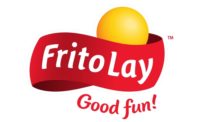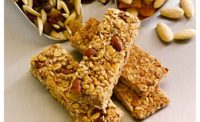Back in the early 1930s, when Charles Elmer Doolin started The Frito Company and Herman Lay started H.W. Lay & Company, they were establishing the groundwork for a snack empire. The two companies merged in 1961, and four years later joined forces with The Pepsi-Cola Company to create PepsiCo, which operates Frito-Lay as a subsidiary. This move brought Frito-Lay’s snack brands to a global audience.
Today, Frito-Lay, based in Plano, TX, is the largest internationally distributed snack company in the world with multiple billion-dollar brands in its lineup. The options at Frito-Lay span 30 brands that account for total annual sales of $15 billion.
This is the legacy of a snack giant accustomed to life at the top. In the $22.6 billion salty snacks category, Frito-Lay’s iconic brands dominate, owning the No. 1 slot in:
- Potato chips, with Lay’s at $2.2 billion in sales
- Tortilla chips, with Doritos at $2.1 billion in sales
- Cheese snacks, with Cheetos at $1.6 billion in sales
- Corn snacks, with Fritos at $508.2 million in sales
- Ready-to-eat popcorn, with Smartfood at $349.1 million in sales
- Data source: IRI, Chicago, 52 weeks ending April 16, 2017
In more-recent years, Frito-Lay has stepped into the better-for-you, clean-label market, most notably with its Simply lines, including Simply Cheetos Puffs made with white Cheddar, Simply Lay’s, Simply Organic Doritos and Simply Organic Tostitos Blue Corn tortilla chips, products that have seen strong resonance with today’s shoppers.
Frito-Lay unveils new innovations every year. And a notable expansion of better-for-you snacking options has begun to emerge, with more coming in 2018. Underpinning everything is a commitment to culinary thinking that is driving a flavor-forward strategy.
Pathways to innovation
Stephen Kalil, CEC, CRC, corporate executive research chef, was the first chef hired by PepsiCo. “I joined Frito-Lay in 2007 with the mission of bringing culinary capabilities internally to the organization,” he says. “We opened our Frito-Lay Culinary Innovation Center in 2010, and since then it has become a hub of activity for product discovery and development, with chefs and product developers working side-by-side.”
The discipline of Culinology, a term coined by the Research Chefs Association blending culinary arts and food science, is instrumental to the process, notes Jody Denton, CRC, executive research chef. “We work very closely with food scientists. Inherently, chefs and scientists do not speak the same language, so this gives us a common language and enables us to work more efficiently together. It has really changed our product-development process.”
While Kalil has a long history in menu development with chain restaurants, Denton comes from an independent fine-dining restaurant background, and the skill sets nicely complement each other. Many other chefs are part of the team, working in different product areas.
“Consumer tastes are ever-evolving into more-complex desires—and flavors. They want flavors that remind them of meals. For that, we need chefs,” says Denton.
“We extract the right balance between culinary arts and food science by embedding the chefs in teams with the product developers,” says Kalil. “That way, you have a full 360° approach to product development.”
Frito-Lay has done some considerable work to understand the core consumers of its brands. “They commissioned this huge study to try and understand which consumers were buying our brands and why,” says Denton. The results showed that snacking occasions have a lot to do with the environment. “Where are they? Who are they with? What time of day is it? Are there other people around? Are they alone? The person who will sit at home in the evening and open a bag of Lay’s all by themselves and for just a little bit of indulgence might pass Lay’s over at a party and go straight to the Tostitos, or they might have a moment with the kids sometime and munch on some Cheetos. It just depends on the situation.”
The culinary innovation team is often the start of new product R&D. “When we have an idea, even though we don’t know how to manufacture it yet, we can make it in the kitchen, and we can come up with an initial culinary execution of the idea,” says Denton. This process lets Frito-Lay initially pitch edible ideas. “When they can see it and taste it, even though it’s a culinary prototype and is going to change a bit when it is going to scale-up, they can get pretty excited about it.”
Then it’s time to go into concept exploration. “That might involve going to a particular type of restaurant or particular place or region and doing field research,” says Denton. “It could also involve getting a group of people in a room and having a formal ideation session around what types of snacks could possibly come from the design concept.”
With that information, the culinary team in Plano will develop a gold standard—a definitive representation of the design concept. This involves working with flavor suppliers and their culinary teams. “We invite their chefs down to enter into a type of ‘Iron Chef’ competition,” says Denton. “We’re all given the same flavors, and we will all execute our best version of that flavor in a food. It could be a dish, sauce or even an ice cream—whatever the chef thinks best expresses that flavor.” Finished expressions of the flavor go to an internal panel, including the seasoning, sensory, marketing and brand teams. “Then we’ll all decide which one best fits the design concept and the brand.”
Once the group has selected the gold standard, there might be some minor adjustments to variables like sweetness, spiciness, etc. “Then we’ll recreate that sample a couple of days later with a different group of experts in the room—the seasoning team, the chefs, the flavor suppliers who are actually going to develop the seasonings,” says Denton. “We’ll taste the sample again, but this time from a very analytical standpoint. We’ll come up with a consensus.”
Then the flavor suppliers go back to their facilities equipped with a wide range of tools, notes Denton. “They have all the upfront marketing information. They have the gold standard formulation that they can recreate in their kitchen to keep them on track. They have the flavor experience map. They really can nail it.”
New flavors and formats
Every year, Frito-Lay reaches out to its audience with the “Do Us a Flavor” contest, soliciting flavor ideas for its snacks and opening the voting to the public. Semi-finalists are awarded $10,000 each, two runner-up finalists get $50,000 each, and the winner brings home $1 million in prize money.
For 2017, the three products open for voting are Crispy Taco Lay’s, Everything Bagel with Cream Cheese Kettle Cooked Lay’s and Fried Green Tomato Wavy Lay’s. Other flavors that have come to life via the contest include Sriracha, Chicken & Waffles, Cheesy Garlic Bread, Cheddar Bacon Mac & Cheese, Wasabi Ginger, Mango Salsa, Cappuccino, Greektown Gyro, New York Reuben, Southern Biscuits & Gravy and West Coast Truffle Fries.
While most of these products are only available for a limited time, some continue on with regional distribution.
“The ‘Do us a Flavor’ campaign year after year has been a favorite, because those flavors really push the normal envelope of what would be allowable on one of our brands,” says Denton. “Some really fun flavors have come out of that.”
Frito-Lay has also offered a variety of new Doritos brand Mix products of late, combining traditional Doritos chips, rolled tortilla chips, 3D triangles and corkscrew shapes of various complementary flavors, most recently launching Blazin’ Buffalo Explosion. Other Doritos Mix products include Cheese Explosion and Taco Explosion.
In continued experimentation with 3D snacks, Frito-Lay launched Lay’s Poppables this year. The multi-dimensional, light-textured potato snacks are available in Sea Salt and White Cheddar varieties.
The Doritos brand also recently released HeatWave chips, which combine two flavors into one chip, such as an initial flavor of sweet, smoky barbecue and then a blast of heat, or first chipotle cream and then heat.
In line with Frito-Lay’s plans to expand its better-for-you snacking options, it launched new Sun Chips products made with vegetables. The Sun Chips Veggie Harvest line includes Tomato, Basil & Cheese and Farmhouse Ranch, both of which feature “Made with Real Veggie & Whole Grains” on the packaging. Each 1-oz. serving contains 13 grams of whole grains.
“At Frito-Lay, we want to deliver against our promise of ‘Performance with Purpose,’” says Kalil. “In doing so, we’re endeavoring to make our products better for you by integrating vegetables, pulses, legumes and whole grains in the right combinations against the right snack forms to deliver products that not only delight you, but are delivering certain nutritional attributes perhaps not seen before in snack foods.”
Expansion into foodservice
In 2009, Taco Bell reached out to Frito-Lay to figure out how to incorporate a top Frito-Lay product into one of its menu items. After settling on the idea of seasoning the crispy taco shell, they tested it with consumers. “That idea scored higher than any idea they’ve ever shown to consumers. They got excited,” says Denton.
“When you have a powerful brand that’s well respected and delivers consistently on its promise to the consumer’s experience, you can design products around that brand that transcend all channels,” says Kalil. “It can go into multiple areas of the store, and the foodservice market.”
After a significant amount of R&D, Frito-Lay and Taco Bell launched the first Doritos Locos taco shell in 2012. “They sold a million the first day,” says Denton. “They’ve sold over 3 billion to date. It’s the most-successful product launch in fast-food history.”
The Doritos Locos lineup has expanded beyond the original Nacho Cheese to include Fiery and Cool Ranch shells.
“In order to enjoy one of our products, you used to have to walk down the chip aisle in the grocery store and grab a bag,” says Denton. “Now, all of a sudden, we’re in fast-food restaurants. It gave us the energy to see how far we can take this away-from-home category and foodservice.”
It also opened up the idea of expanding top Frito-Lay brands into other snacking categories, including frozen. The result was Doritos Loaded Breaded Cheese Snacks, now available in Nacho Cheese and Jalapeño & Cheese. “It launched in 7-Eleven, and then Walmart freezer cases,” says Denton. “Now, they’re in freezer cases all over the country.”
The foodservice innovations only increased. Burger King launched Mac N’ Cheetos, crispy mac-and-cheese snacks coated with Cheetos. Cheetos Chicken Fries then followed.
Other collaborations have surfaced with Subway, Papa John’s and other chains.
In August, Frito-Lay even opened a pop-up restaurant in downtown New York called The Spotted Cheetah, offering 11 Cheetos-themed dishes spanning appetizers, entrées and desserts, including Cheetos Crusted Fried Pickles and Cheetos Sweetos Crusted Cheesecake.
“There’s something different about research chefs,” says Denton. “Chefs—especially the sous chef or executive chef—are required to be creative on a daily basis. They need to come up with specials for the menu. They exercise that part of their brain—on-demand quick creativity. It’s a unique type of creativity.”
AT A GLANCE
Company: Frito-Lay, Inc.
Headquarters: Plano, TX
Website: www.fritolay.com
Number of employees: Nearly 55,000
Annual sales: $15 billion
FRITO-LAY CULINARY INNOVATION CENTER, KEY PERSONNEL
Corporate Executive Research Chef: Stephen Kalil, CEC, CRC
Executive Research Chef: Jody Denton, CRC











